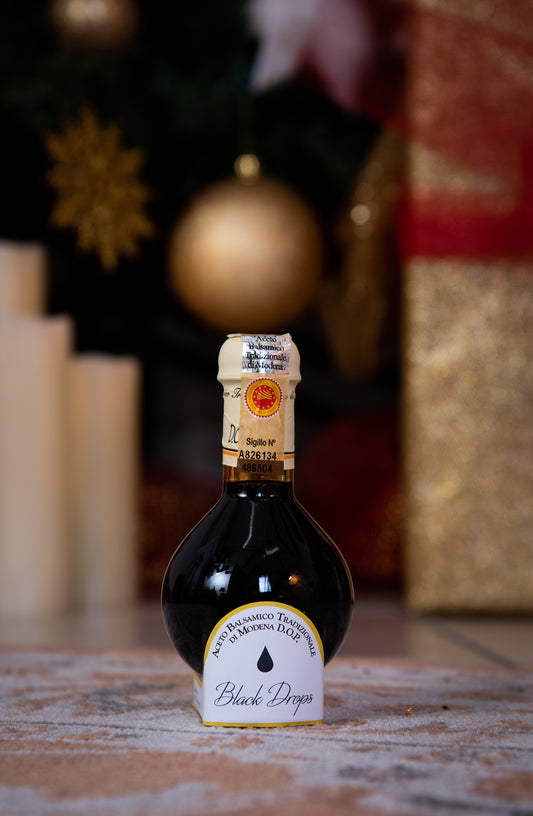If you have happened to stop for a moment to read the label of a good Balsamic Vinegar, you will have noticed that the first ingredient listed is Cooked Must . But what exactly is it and how is it obtained? In this article, we will reveal the secrets of the most precious ingredient of Balsamic Vinegar .
The Origins of Cooked Must
Cooked must already existed in ancient times and was known as "Saba". It was mainly used as a natural sweetener , already in Roman times. It was obtained by boiling the grape must twice : the first boiling produced a sweet sauce called defrutum (used as a natural sweetener and energizer); the second boiling gave rise to saba , a viscous and very sweet compound, doubly concentrated. This good was available to farmers in the past to make cooking more festive with sapa-based desserts, especially in the cold season. It was considered a luxury reserved mainly for nobles.
How is concentrated cooked grape must produced?
The production of cooked must for the traditional Balsamic Vinegar of Modena is an artisanal and traditional process that requires time and attention to detail. The basis for cooked must is grapes, usually Trebbiano or Lambrusco grapes , which must be ripe and of high quality. After extracting the must, which is the sugary liquid obtained from pressing the grapes, it is brought to the boil in a large cauldron or pot over a moderate heat. During this phase, the water evaporates and the must concentrates, becoming sweeter and denser.
The wort is constantly heated and reduced until it reaches the desired consistency, a process that can take many hours and constant temperature control. Once the desired consistency is reached, the cooked must is cooled and filtered to remove any impurities. Next, it is transferred to fine wooden barrels, often made of oak, cherry or chestnut, for the further aging process , during which it develops complex aromas and becomes darker and denser.
Cooked Must and “AGED” Balsamic Vinegar of Modena PGI Black Drops
Our “AGED” Balsamic Vinegar of Modena PGI (Protected Geographical Indication) is a mixture of wine vinegar and cooked must that is blended for over 60 days in large barrels of 220, 350, 500 liters and more. The most precious ingredient is the cooked must , which determines the goodness of the balsamic vinegar as a whole. The grapes used come from Romagna, mainly Sangiovese . The grapes are pressed and cooked in controlled and certified boilers until they reach the right sugar level. The cooked must obtained is then mixed with controlled wine vinegar . The resulting mixture is left to rest in oak or chestnut barrels, usually for at least three years, an essential requirement to obtain the "Aged" denomination of Balsamic Vinegar of Modena PGI.
The Aging of Cooked Must
Over the years, the cooked must is transferred from larger barrels to smaller barrels. This process promotes better interaction between the cooked must and the wood, as well as more precise control of oxidation. During this period, the cooked must can age for at least 12 years, sometimes even longer, depending on the category of the balsamic vinegar. For example, Traditional Balsamic Vinegar of Modena DOP can age for 12 or 25 years.
Cooked must and tradition
Cooked must has a prominent place in gastronomic traditions , including use in traditional desserts related to the Christmas holidays. In Emilia Romagna, for example, biscuits known as "Sabadoni" are prepared, which include cooked must in the dough and are often soaked in cooked must to enhance their flavour.
Now that you know the value of cooked must , why don't you try our “AGED” Black Drops Balsamic Vinegar of Modena PGI?








